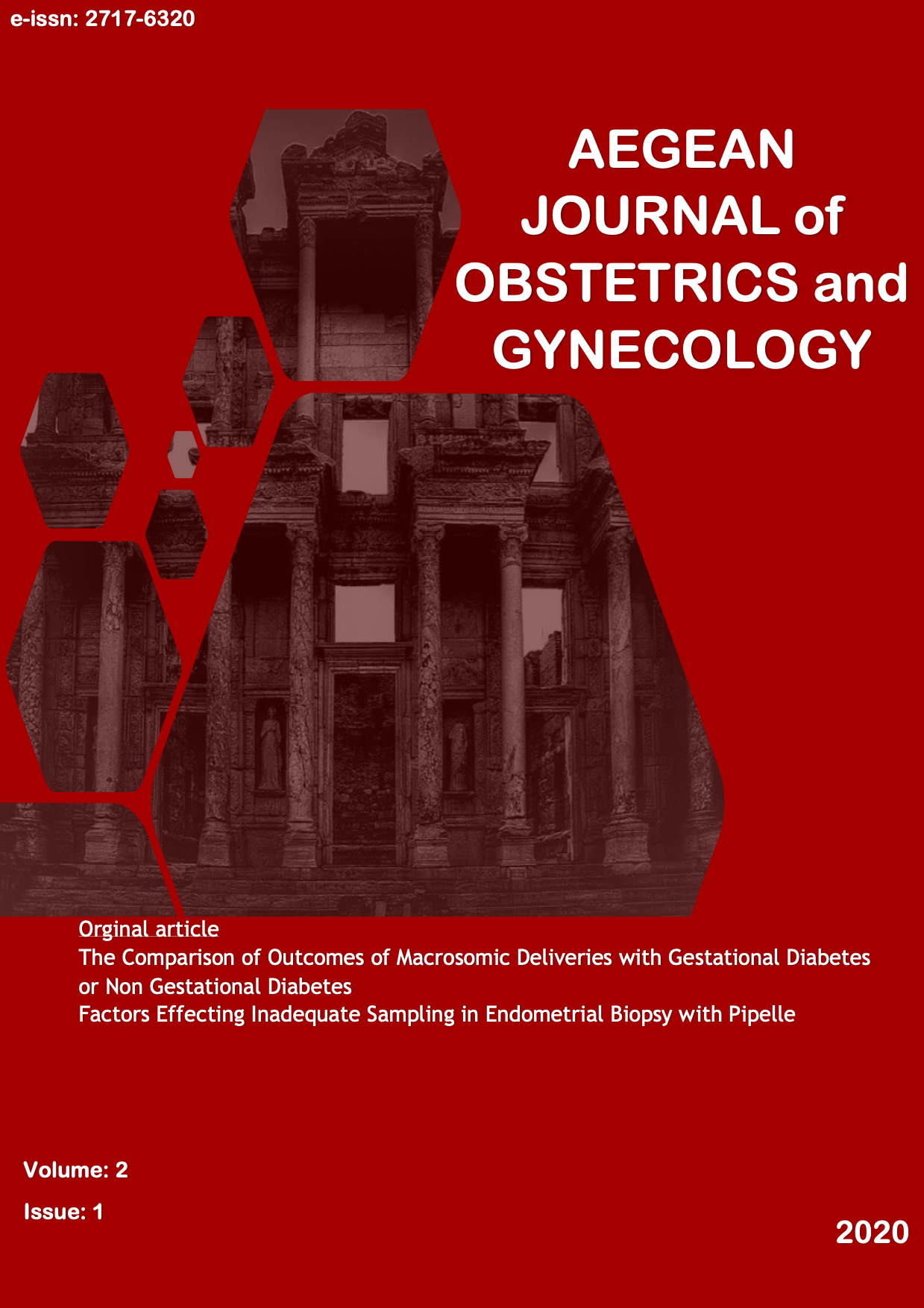Five-Year Retrospective Evaluation of large for gestational age (LGA) infants who Birth Weight of Over 90% Percentile
Evaluation of large for gestational age (LGA)
DOI:
https://doi.org/10.46328/aejog.v2i1.21Keywords:
Pregnancy, large for gestational age, gestational diabetes mellitus, cesareanAbstract
Objective: The aim of this study is to evaluate the obstetric and neonatal outcomes of pregnant women delivering large for gestational age (LGA) infants.
Material and Methods: A total of 399 pregnant women giving birth to LGA infants in the Gynecology and Obstetrics Department of Dicle University Medical Faculty Hospital between January 2014 and December 2018 were included in this retrospective study. Demographic features, pregnancy and infant data, delivery type (vaginal delivery/cesarean delivery), and patients’ indications for cesarean section were assessed.
Results: The mean age of the patients was 32.34±6.63, their gravida was 5.16±2.65 and parity was 3.55±2.36. The mean gestational week was 37.12±2.840 weeks and the mean birth weight was 3922.46±643.546 g. Of all patients, diabetes was detected in 28.5%, polyhydramnios in 11.3%, placental invasion anomaly in 4%, and preeclampsia in 9%. While 83.7% (334) of the patients underwent cesarean section, the remaining 16.3% (65) underwent normal delivery. 3.25% (13) of the patients developed complications during delivery. The rate of fetal anomaly was 11.7% (47) in existing pregnancies while the rate of fetal death was 5.01% (20).
Conclusion: A cesarean delivery was performed in the majority of pregnant women with a suspected LGA infant. This group of patients exhibited a very high rate of gestational diabetes mellitus and diabetes mellitus. Existing pregnancies constitute a specifical pregnancy population that should be taken into consideration regarding probable complications and problems with the infant.
Downloads
Published
Issue
Section
License
Copyright (c) 2020 Aegean Journal of Obstetrics and Gynecology

This work is licensed under a Creative Commons Attribution-NonCommercial 4.0 International License.
AEJOG is an open-access journal which means that through the internet; freely accessible, readable, downloaded, copied, distributed, printed, scanned, linked to full texts, indexed, transferred to the software as data and used for any legal purpose, without financial, legal and technical obstacles. The only authority on reproduction and distribution and the sole copyright role in this field; has been given to authors therefore they can have control over the integrity of their work, so that they are properly recognized and cited. This is in accordance with the BOAI definition of open access.
The content in Aegean Journal of Obstetrics and Gynecology (AEJOG) is protected by copyright. All copyrights of the submitted articles are transferred to the Aegean Journal of Obstetrics and Gynecology within the national and international regulations at the beginning of the evaluation process. Upon submission of their article, authors are requested to complete an assignment of copyright release form. Authors should acknowledge that they will not submit their manuscript to another journal, publish in any other language, or allow a third party to use the article without the written consent of the Aegean Journal of Obstetrics and Gynecology. When an article is published on AEJOG, it is read and reused for free as soon as it is published under a Creative Commons Attribution-NonCommercial 4.0 (CC BY NC 4.0) license. In case the article is rejected, all copyrights are given back to the authors.
The content of the article and all legal proceedings against the journal, if any, are the responsibility of the author. In addition, all financial and legal liability for the copyright of the presented tables, figures and other visual materials protected by law belongs to the authors. It is the responsibility of the corresponding author to report authors scientific contributions and responsibilities regarding the article. In case of any conflict of interest, it is the responsibility of the authors to indicate the conflict of interest in the Disclosure part of the article. Author names will be published as they are listed on the submitted Title page.




